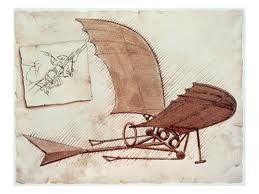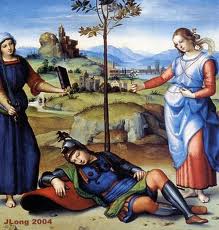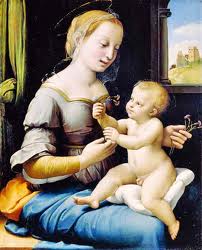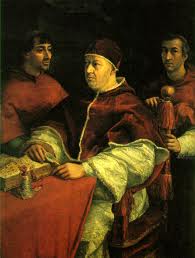Art History
Renaissance
During the medieval period, people were mainly concerned with living in a way that would assure their eternal reward in the next world. Gradually people became more interested in the present world and their place in it. This change of attitude, the period in which it occurred, and the ways in which it was demonstrated in art, literature, and learning are called the Renaissance.The Renaissance began in Italy during the fourteenth century and reached its peak in the fifteenth and early sixteenth centuries. One reason it began in Italy was that the tradition of classical art and culture was never entirely lost in this country. Studying the classics encouraged artists to look for subject matter outside of religion. It also made realism more important. In drawing and painting, artists developed rules of perspective and the science of using light and dark values to obtain amazingly realistic effects.Up to the Renaissance, the history of art is mainly the history of styles and ideas to which many unknown artists contributed. But after the fifteenth century, the history of art deals mainly with the lives and accomplishments of individual artists. Leonardo, Michelangelo, and Raphael were three artists, who made up the most astonishing trio of geniuses who ever lived at the same time in the same place.
Artists also studied anatomy to try to make their drawings of figures look more life- like. Leonardo da Vinci wanted to learn every thing possible about a subject before trying to recreate it in art. This effort, however, took up so much of his time that the amount of art he finished is rather small. The human body was just one of Leonardo's many interests. He estimated that he filled 120 notebooks with his figure drawings. These drawings were surrounded by explanations and reminders to himself about other subjects that interested him.
Works by Leonardo da Vinci

|
 |
 |
| Mona Lisa |
Proportions of man |
Sketch of flying machine |
Michelangelo is known for his painting and sculpture, but he depended on drawing skills to design his works. Imagine that you meet him at the foot of a huge scaffold in the Sistine Chapel over five hundred years ago. The artist peers upward at the dim corner of the ceiling 68' (20 m) above where he will paint a twisting female figure. He reaches for his sketch paper and a piece of red chalk and begins to draw. Then he returns to his small studio. Michelangelo takes out a fresh sheet of paper and begins to draw a model, concentrating on the model's feet, hand, and torso. All of these drawings are crowded onto a single sheet. All of the available space is used because paper is expensive. The artist has been drawing a male model, since female models weren't used in the sixteenth century. So Michelangelo makes another drawing at the bottom corner of the paper, changing the face of the figure to look more like a woman's. Michelangelo is tired. It seems as if the Sistine Chapel ceiling will never be finished. He has food sent up to him on the scaffold, so he doesn't have to stop work. He leaves the scaffold for a few hours of sleep only when he is too weary to continue. Painting the ceiling seems like a waste of effort. The walls in the chapel are already decorated with great works by well-known artists. Who will bother to stop admiring these paintings and look up at the ceiling? Unexpectedly the artist reaches for a pen and begins to write, perhaps to express some of his frustration and disappointment. "When will the nightmare be over? My chin is growing into my stomach, my beard has become part of my arm, my face is a mosaic of color, now I drink and breathe only paint. My body is twisted backward in a circle and my sanity is completely gone. I hate this place. Why am I here? I'm not even a painter!"
The next day Michelangelo would begin drawing and painting the new figure on the ceiling. It would be one of 342 figures he created on the chapel's ceiling. The task demanded all of his waking hours for four years. But as an eyewitness later reported, when the artist was finally finished and the Sistine Chapel was opened to the public, the whole world rushed to Rome to stare in wonder at the ceiling. Michelangelo wanted to keep his creative process a secret. He gathered up and burned as many of his sketches as he could before he died. Only a few survived.
Works of Michelangelo Buonarroti
 |
 |
 |
| Moses |
Sistine Chapel |
David |
Raphael Sanzio didn't invent new techniques, as Leonardo and Michelangelo did, but he was able to perfect their techniques to create what is referred to as the High Renaissance style. His figures skillfully blended Michelangelo's sense of movement and full, well-rounded forms, and Leonardo's soft modeling with light and dark values. But even though he borrowed freely from these and other artists, Raphael maintained his own identity by adding his own charm and grace. These qualities are especially apparent in The Madonna of the Pinks.
Works of Raphael Sanzio



 |
 |
 |
| The Knight's Dream |
Madonna of the Pinks |
Pope Leo X with Cardinals |


